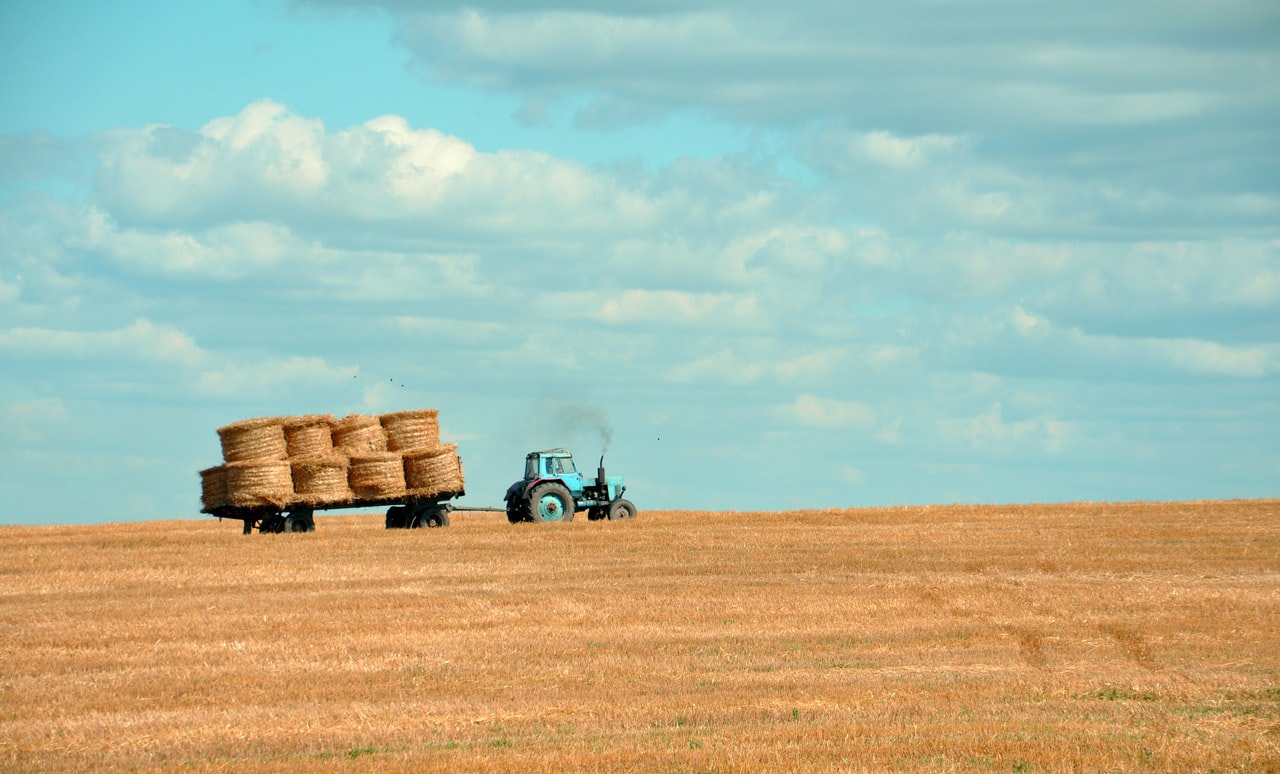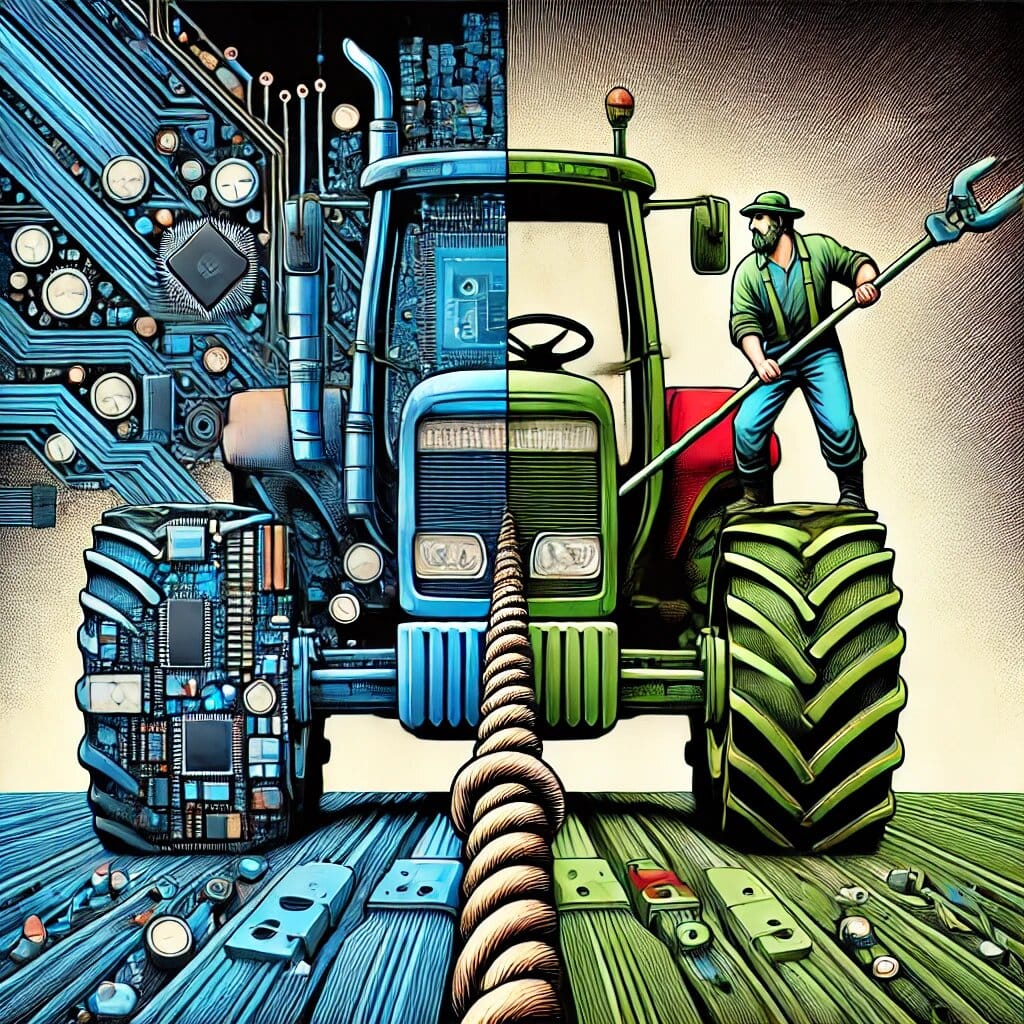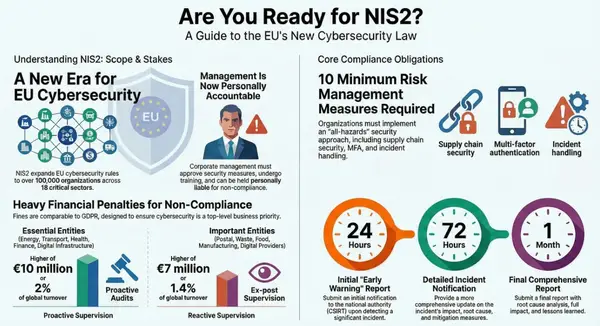Agricultural Technology Revolution: IoT, AI, and Automation Driving Cybersecurity Standards in 2025

Executive Summary
The agricultural sector is experiencing unprecedented technological transformation, with IoT, AI, and automation technologies rapidly reshaping farming operations worldwide. As these digital innovations proliferate, cybersecurity concerns have intensified, making standards like ISO 24882 more critical than ever. This comprehensive analysis examines the latest developments in agricultural technology adoption and the evolving cybersecurity landscape that necessitates robust protective measures.

Current State of Agricultural Technology Adoption
IoT Market Explosion
The agricultural IoT sector has reached a pivotal moment in 2025. The global agriculture IoT market is valued at approximately $28.65 billion in 2024, with projections indicating growth at a compound annual growth rate (CAGR) of 10.5% through 2030. This exponential growth reflects the industry's increasing reliance on connected devices, sensors, and automated systems that collectively form the backbone of modern smart farming operations.
Key drivers of this market expansion include:
- Rising demand for operational efficiency and automation
- Increasing adoption of precision agriculture techniques
- Growing need for real-time monitoring and data analytics
- Enhanced connectivity infrastructure in rural areas
AI Integration in Agricultural Operations
Artificial intelligence has emerged as a transformative force in agriculture, with 2025 marking a significant acceleration in AI adoption across farming operations. AI applications are particularly prominent in:
Crop Monitoring and Disease Detection: Advanced AI algorithms integrated with IoT sensors enable real-time plant health monitoring, early disease detection, and pest management. These systems can identify potential threats before they become widespread, significantly reducing crop losses.
Autonomous Machinery: AI-powered autonomous tractors and harvesting equipment are becoming increasingly sophisticated, capable of operating with minimal human intervention while maintaining precision and efficiency.
Predictive Analytics: Machine learning algorithms analyze historical data, weather patterns, and soil conditions to provide farmers with actionable insights for optimizing planting schedules, irrigation, and harvest timing.
Resource Optimization: AI systems help optimize water usage, fertilizer application, and energy consumption, contributing to more sustainable farming practices.
Automation Advancements
The automation landscape in agriculture has evolved dramatically, with 2025 witnessing the deployment of increasingly sophisticated automated systems:
Smart Irrigation Systems: Automated irrigation networks use AI and IoT sensors to monitor soil moisture, weather conditions, and crop water requirements, adjusting water delivery in real-time to optimize usage and reduce waste.
Robotic Farming Solutions: Agricultural robots are now handling various manual tasks, from planting and harvesting to weeding and sorting, addressing labor shortages while improving consistency and efficiency.
Drone Technology: Multi-spectral sensor-equipped drones with AI capabilities provide enhanced crop monitoring, enabling precise analysis of plant health, soil conditions, and crop maturity across large agricultural areas.

Cybersecurity Challenges in the Connected Farm
Rising Threat Landscape
The digital transformation of agriculture has created an expanded attack surface for cybercriminals. Recent incidents highlight the growing vulnerability of agricultural systems:
In January 2025, a US-based precision component manufacturer specializing in agricultural equipment suffered a ransomware attack, demonstrating how cyberthreats can penetrate the agricultural supply chain and impact global farming operations.
Unique Vulnerabilities in Agricultural Settings
Agricultural systems face distinct cybersecurity challenges that differentiate them from other sectors:
Remote Operations: Many agricultural operations occur in isolated rural areas with limited connectivity, making real-time security monitoring and rapid response challenging.
Legacy System Integration: Modern IoT and AI systems often need to integrate with older agricultural equipment, creating potential security gaps where legacy systems lack robust cybersecurity measures.
Seasonal Vulnerabilities: Agricultural operations often follow seasonal patterns, which can create predictable windows of vulnerability during critical farming periods.
Scale and Complexity: Modern farms operate extensive networks of connected devices, sensors, and automated systems, making comprehensive security monitoring complex and resource-intensive.
ISO 24882 Development and Implementation Progress
Current Standard Status
As of 2025, ISO 24882 has progressed to the Committee Draft (CD) stage, with the CD consultation initiated on January 6, 2025. This milestone represents significant progress in establishing comprehensive cybersecurity standards specifically tailored to agricultural machinery and equipment.
The standard is being developed under ISO/TC 23/SC 19, focusing on agricultural electronics, and addresses cybersecurity engineering requirements throughout the entire lifecycle of agricultural machinery, from concept and design through decommissioning.
Alignment with Global Regulatory Frameworks
ISO 24882's development aligns with broader cybersecurity initiatives, particularly the European Union's Cyber Resilience Act (CRA). This alignment ensures that agricultural cybersecurity standards integrate seamlessly with wider regulatory frameworks, providing manufacturers with coherent compliance pathways.
The standard also complements UNECE WP.29 R155 regulations, offering sector-specific technical guidance that helps agricultural machinery manufacturers meet broader regulatory requirements more effectively.
Technology-Specific Cybersecurity Considerations
IoT Security Challenges
The proliferation of IoT devices in agriculture creates multiple security vectors that require specialized attention:
Device Authentication: Ensuring that all connected devices can be properly authenticated and authorized before accessing farm networks.
Data Encryption: Protecting sensitive agricultural data transmitted between devices, sensors, and central management systems.
Update Management: Maintaining security patches and updates across diverse IoT device ecosystems, often operating in remote locations with limited connectivity.
Network Segmentation: Implementing proper network segmentation to contain potential breaches and limit lateral movement within farm networks.
AI System Security
As AI becomes more prevalent in agricultural operations, specific security considerations emerge:
Algorithm Integrity: Ensuring that AI algorithms cannot be manipulated or poisoned by malicious actors seeking to disrupt agricultural operations.
Training Data Security: Protecting the integrity of training datasets used to develop AI models, as compromised data can lead to unreliable or manipulated AI behavior.
Model Transparency: Maintaining visibility into AI decision-making processes to detect potential anomalies or security breaches.
Automation Security Requirements
Automated agricultural systems present unique security challenges:
Control System Security: Protecting industrial control systems that manage automated farming equipment from cyber attacks that could cause physical damage or operational disruption.
Safety System Integration: Ensuring that cybersecurity measures don't compromise critical safety systems that protect workers and equipment.
Remote Access Controls: Implementing secure remote access mechanisms that allow authorized personnel to monitor and control automated systems while preventing unauthorized access.
Industry Response and Adoption Strategies
Manufacturer Initiatives
Agricultural equipment manufacturers are increasingly recognizing the importance of cybersecurity integration:
Security by Design: Leading manufacturers are incorporating cybersecurity considerations from the earliest stages of product development, aligning with ISO 24882's lifecycle approach.
Supply Chain Security: OEMs are implementing comprehensive security assessments of third-party components and services to ensure end-to-end security.
Continuous Monitoring: Advanced monitoring systems are being deployed to detect and respond to security threats in real-time.
Farmer Education and Awareness
The agricultural community is gradually recognizing the importance of cybersecurity:
Training Programs: Industry organizations are developing cybersecurity training programs specifically tailored to agricultural operators.
Best Practices Development: Collaborative efforts between manufacturers, farmers, and cybersecurity experts are producing practical security guidelines for agricultural operations.
Risk Assessment Tools: Simplified risk assessment tools are being developed to help farmers evaluate and address cybersecurity risks in their operations.
Future Outlook and Emerging Trends
Technology Evolution
Several emerging technologies will shape the future of agricultural cybersecurity:
Edge Computing: Increased deployment of edge computing solutions will enable real-time security processing closer to agricultural equipment, reducing latency and improving response times.
Blockchain Integration: Blockchain technology may provide enhanced security for agricultural data sharing and supply chain traceability.
Quantum-Resistant Security: As quantum computing advances, agricultural systems will need to adopt quantum-resistant encryption methods to maintain long-term security.
Regulatory Development
The cybersecurity regulatory landscape for agriculture is expected to evolve significantly:
Global Harmonization: International efforts to harmonize agricultural cybersecurity standards will likely accelerate, with ISO 24882 serving as a foundation for global cooperation.
Sector-Specific Regulations: Governments may develop agriculture-specific cybersecurity regulations that complement broader cybersecurity frameworks.
Incentive Programs: Policy initiatives may emerge to encourage cybersecurity adoption through financial incentives or regulatory preferences.
Recommendations for Stakeholders
For Agricultural Equipment Manufacturers
- Early Adoption: Begin implementing ISO 24882 principles immediately, even before formal standard publication
- Collaborative Development: Participate actively in standard development processes and industry cybersecurity initiatives
- Investment in Security: Allocate sufficient resources to cybersecurity capabilities and expertise development
- Customer Education: Develop comprehensive cybersecurity training and support programs for customers
For Farmers and Agricultural Operators
- Security Assessment: Conduct regular cybersecurity risk assessments of existing operations
- Vendor Evaluation: Prioritize cybersecurity capabilities when selecting new agricultural technologies
- Staff Training: Invest in cybersecurity training for farm personnel
- Incident Response: Develop and regularly test cybersecurity incident response plans
For Technology Providers
- Security Integration: Embed cybersecurity features into all agricultural technology solutions
- Compliance Planning: Ensure products align with emerging standards like ISO 24882
- Continuous Monitoring: Implement ongoing security monitoring and support services
- Innovation Investment: Invest in research and development of agricultural cybersecurity solutions
For Policymakers and Industry Bodies
- Standard Support: Provide resources and guidance to facilitate ISO 24882 implementation
- Capacity Building: Support education and training initiatives to build cybersecurity capacity
- Regulatory Integration: Ensure alignment between agricultural cybersecurity standards and broader regulatory frameworks
- Research Funding: Support research into agricultural cybersecurity technologies and best practices
Conclusion
The convergence of IoT, AI, and automation technologies in agriculture represents both an unprecedented opportunity and a significant cybersecurity challenge. As the agricultural sector continues its digital transformation, the importance of robust cybersecurity measures becomes increasingly critical.
ISO 24882's development provides a crucial framework for addressing these challenges, offering comprehensive guidelines for securing agricultural machinery and equipment throughout their lifecycle. The standard's emphasis on risk assessment, lifecycle management, and supply chain security aligns perfectly with the complex, interconnected nature of modern agricultural operations.
Success in implementing these cybersecurity measures will require coordinated efforts from manufacturers, farmers, technology providers, and policymakers. By working together to address cybersecurity challenges proactively, the agricultural sector can realize the full benefits of digital transformation while maintaining the security and resilience necessary for global food security.
As we move forward, the agricultural industry must remain vigilant and adaptive, continuously evolving cybersecurity practices to address emerging threats while embracing the technological innovations that will define the future of farming. The journey toward secure, connected agriculture is complex, but with proper planning, investment, and cooperation, the sector can build a robust foundation for sustainable and secure food production in the digital age.
Related Reading
For foundational understanding of ISO 24882 and its development process, readers may find value in exploring "ISO 24882: Addressing Cybersecurity Challenges in Agricultural Machinery and Tractors" which provides detailed background on the standard's scope, objectives, and regulatory relationships.
This analysis incorporates the latest available information as of 2025 and reflects ongoing developments in agricultural technology adoption and cybersecurity standards. The rapidly evolving nature of both technology and cybersecurity requires continuous monitoring and adaptation of protective measures.







